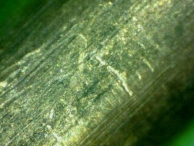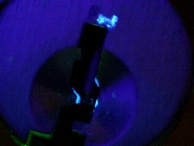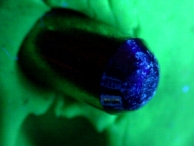Impressioning
Impressioning is a covert entry technique that creates a working key for a target lock. Impressioning has two variants: copying, which focuses on making a mold of a working key; manipulation, which focuses on using a blank key to manipulate lock components to determine their proper positions. This page will focus on manipulation-based impressioning.
For information on copying-based impressioning, please visit the "Tool Mark Identification" and "Material Transfer" sections of the Key Analysis page.
Impressioning Principles
Manipulation-based impressioning works by taking a blank key that fits a target lock, applying extreme torque to the key (thus binding components), and manipulating the key blank in order to produce marks on the key. This is correct for pin-tumbler locks, but the actual process varies for different lock designs. The theory behind impressioning is that components at the wrong position will bind and become immobile. When the soft brass key contacts the immoble components, a mark should be produced. When a component is properly positioned it should no longer bind and thus no longer leave marks. The blank is used to gather marks, then filed in those positions. This is repeated until all components are in their proper position and the lock opens.
Because this type of manipulation is stressful on the key and cylinder we expect to find various types of forensic evidence. Namely, it is expected that the forceful binding of bottom pins, all of which are raised at or above shear line, to cause marks. We may also find material transfer from filing the key if the attacker is not careful to properly clean the key after each filing.
There are variations on the manipulation process that use pressure responsive materials, such as lead, tape, or plastic to facilitate the process of impressioning. In these cases we may also find material transfer as the soft materials rub against the keyway and inside of the plug.
Of course, the key used in manipulation-based impressioning will provide a good deal of forensic evidence, but that is covered in the "Hand-made Keys" and "Tool Mark Identification" sections on the Key Analysis page.
Pressure-responsive Impressioning
Stay tuned!





